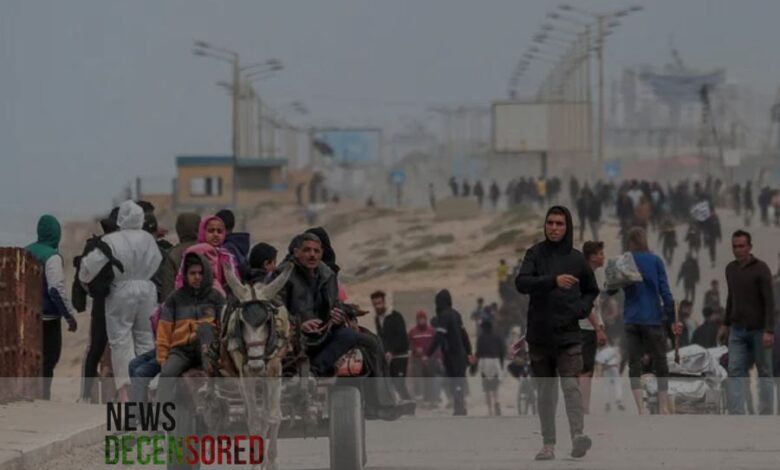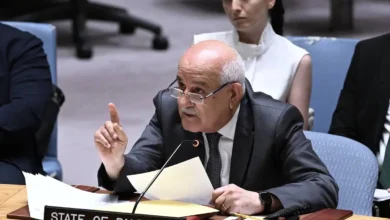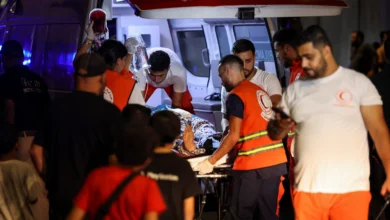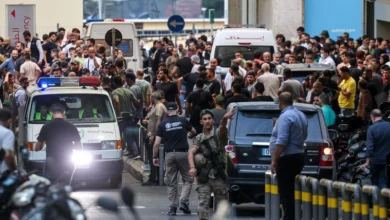Israel uses facial recognition technology in Gaza

Within minutes of walking through an Israeli military checkpoint along the central highway in the Gaza Strip on November 19, Palestinian poet Musab Abu Toha was asked to exit the crowd. He put down his 3-year-old son, whom he was carrying, and sat in front of a military jeep.
After half an hour, Abu Toha heard his name called, then he was blindfolded and taken for interrogation. “I had no idea what was going on, or how they could suddenly know my full legal name,” said the 31-year-old, who added that he had no connection to the militant group Hamas and was trying to leave Gaza for Egypt.
It turns out that Abu Toha had come within range of cameras equipped with facial recognition technology, according to three Israeli intelligence officials who spoke on the condition of anonymity. They said that after examining his face and identifying him, the artificial intelligence program found that Al-Shaer was included on an Israeli wanted list.
Abu Toha is one of hundreds of Palestinians selected by a previously undisclosed Israeli facial recognition program that began operating in Gaza late last year. Israeli intelligence officers, military officials, and soldiers stated that these broad and experimental efforts are being used to conduct mass surveillance operations there, collecting and classifying the faces of Palestinians without their knowledge or consent.
Intelligence officials said the technology was initially used in Gaza to search for Israeli nationals taken hostage by Hamas during its October 7 border raids. After Israel launched a ground attack on Gaza, it increasingly resorted to the program to eliminate anyone linked to Hamas or other armed groups. Sometimes, this technology incorrectly identified civilians as wanted Hamas fighters, according to one officer.
Four intelligence officers said that the facial recognition program, run by the Israeli military intelligence unit, including the 8200th Electronic Intelligence Division, relies on technology from Corsight, a private Israeli company. They also use Google Images, they said. Combined, these technologies enable Israel to pick faces out of crowds and blurry drone footage.
Three people with knowledge of the program said they were speaking out because of concerns that it constituted a misuse of time and resources by Israel.
An IDF spokesman declined to comment on the activity in Gaza, but said the army “carries out necessary security and intelligence operations, while making significant efforts to minimize harm to non-participating residents.” He added: “Naturally, we cannot refer to operational and intelligence capabilities in this context.” Facial recognition technology has spread around the world in recent years, fueled by increasingly sophisticated artificial intelligence systems. While some countries use this technology to facilitate air travel, China and Russia have used this technology against minorities and to suppress dissent. Israel’s use of facial recognition technology in Gaza stands out as an application of the technology in warfare.
“Completely stripping the Palestinians of their humanity.”
Matt Mahmoudi, a researcher at Amnesty International, says Israel’s use of facial recognition is a concern because it could lead to the “complete dehumanization of Palestinians” where they are not seen as people. He added that Israeli soldiers are unlikely to question this technology when they know someone is part of an armed group, although the technology makes mistakes.
Israel has previously used facial recognition in the West Bank and East Jerusalem, according to an Amnesty International report last year, but efforts in Gaza go further. According to an Amnesty International report, Israelis in the West Bank and East Jerusalem have a local facial recognition system called “Blue Wolf.” At checkpoints in West Bank cities such as Hebron, Palestinians are screened with high-resolution cameras before being allowed to pass. The report stated that soldiers also use smartphone applications to scan the faces of Palestinians and add them to a database.
There was no facial recognition technology previously in Gaza, from which Israel withdrew in 2005. Israeli intelligence officers said that Hamas’s surveillance in Gaza occurred instead through tapping phone lines, interrogating Palestinian prisoners, and harvesting footage from drones. Accessing private accounts on social media and hacking communications systems.
After October 7, Israeli intelligence officers in Unit 8200 turned to that surveillance to obtain information about Hamas fighters who had penetrated Israel’s borders. One of the officers said that the unit also began combing the area by examining footage of the attacks from security surveillance cameras, as well as through video clips that Hamas published on social media. He said that the unit had been tasked with preparing a “hit list” of Hamas members who participated in the attack. Three Israeli intelligence officers said that Corsight was then hired to create a facial recognition program in Gaza.
The company, headquartered in Tel Aviv, says on its website that the technology it uses requires less than 50 percent of a face to be accurately recognized. Robert Watts, president of Corsight, posted this month on LinkedIn that facial recognition technology can work with “sharp angles” (even from drones), darkness, and poor quality.




